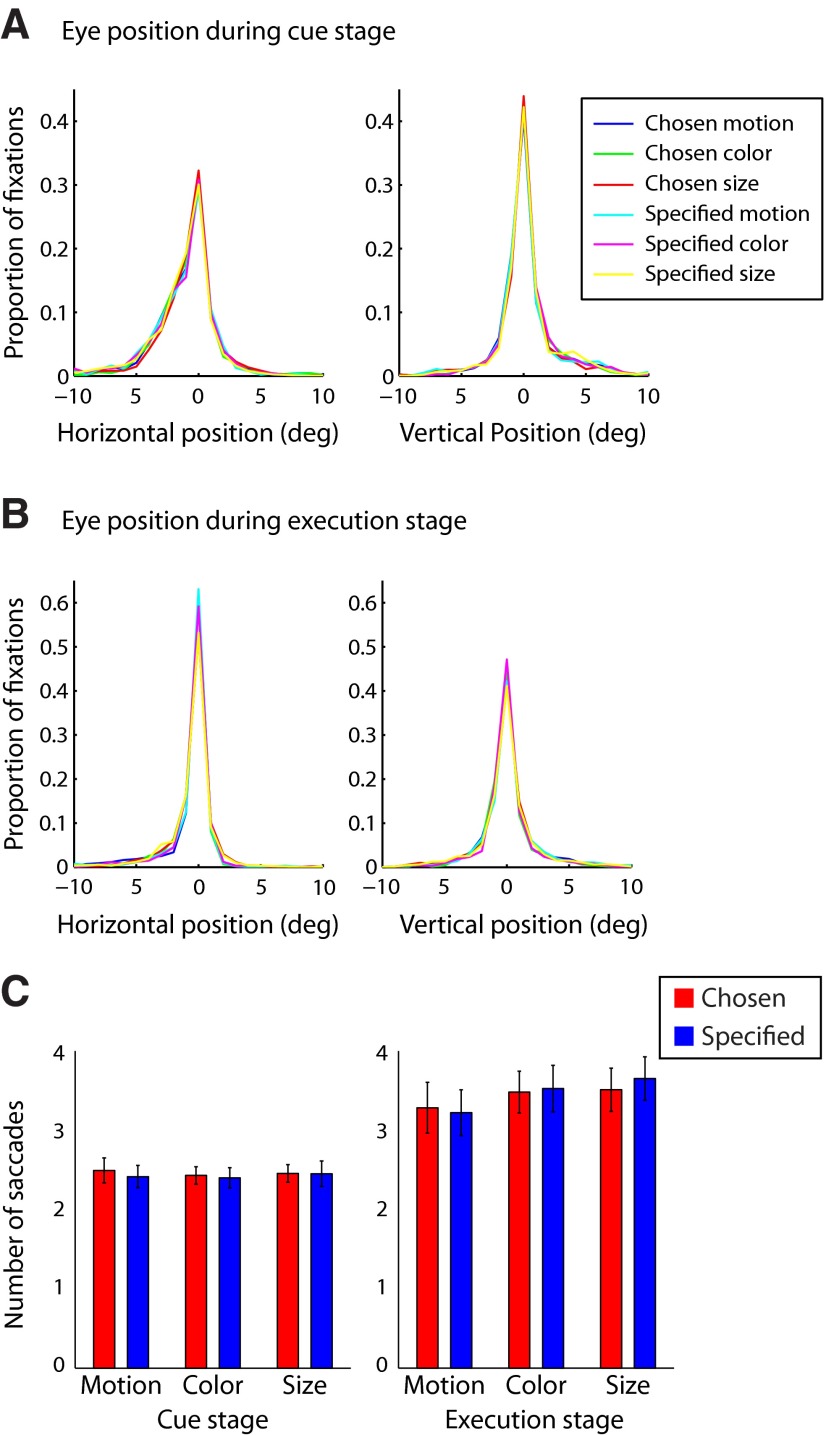Figure 9.
A–C, Eye-tracking data of the horizontal (A) and vertical (B) eye position and the number of saccades per condition (C), separately for rule cue and execution stages. A repeated-measures ANOVA indicated that there was no significant difference between task rules on mean horizontal eye position (cue stage: F(2,20) = 0.56, p = 0.58; execution: F(2,20) = 0.56, p = 0.58), mean vertical eye position (cue stage: F(2,20) = 0.60, p = 0.56; execution: F(2,20) = 0.43, p = 0.66), or the number of saccades per trial (cue stage: F(2,20) = 0.22, p = 0.80; execution: F(2,20) = 1.41, p = 0.27). In addition, no significant differences were observed between rule context (chosen vs specified) for mean horizontal eye position (cue stage: F(1,10) = 2.12, p = 0.17; execution: F(1,10) = 1.09, p = 0.32), mean vertical eye position (cue stage: F(1,10) = 2.68, p = 0.13; execution: F(1,10) = 2.71, p = 0.31), or number of saccades (cue stage: F(1,10) = 0.19, p = 0.67; execution: F(1,10) = 0.56, p = 0.47). These analyses suggest that our results could not readily be attributed to eye-movement differences between conditions.

